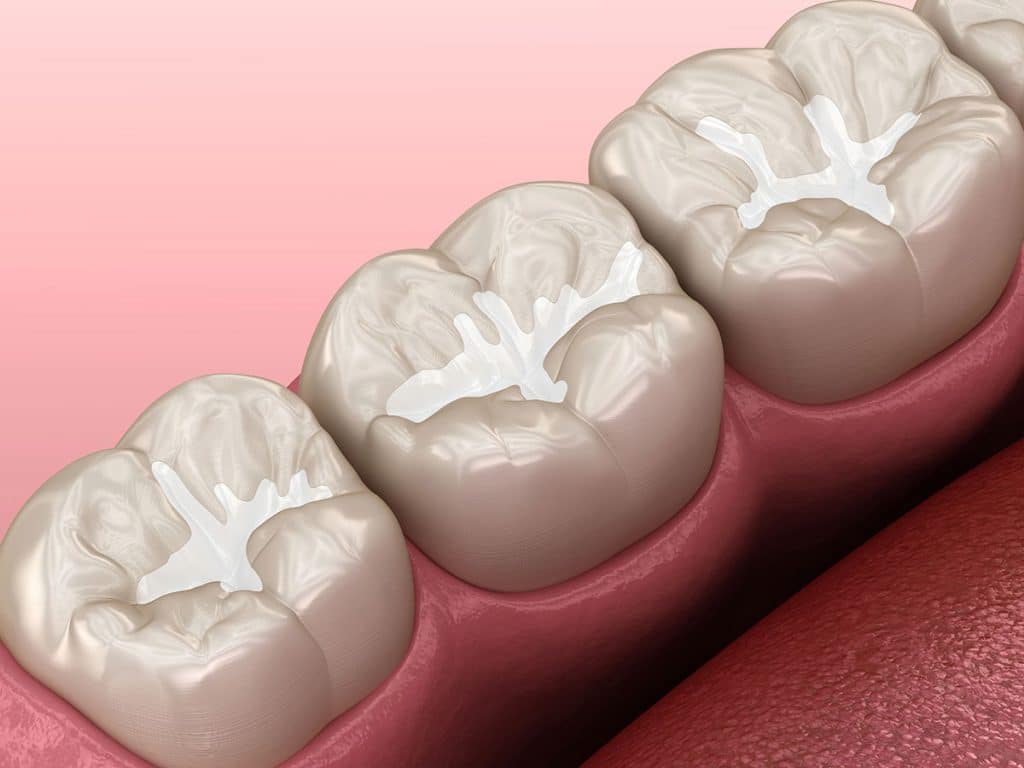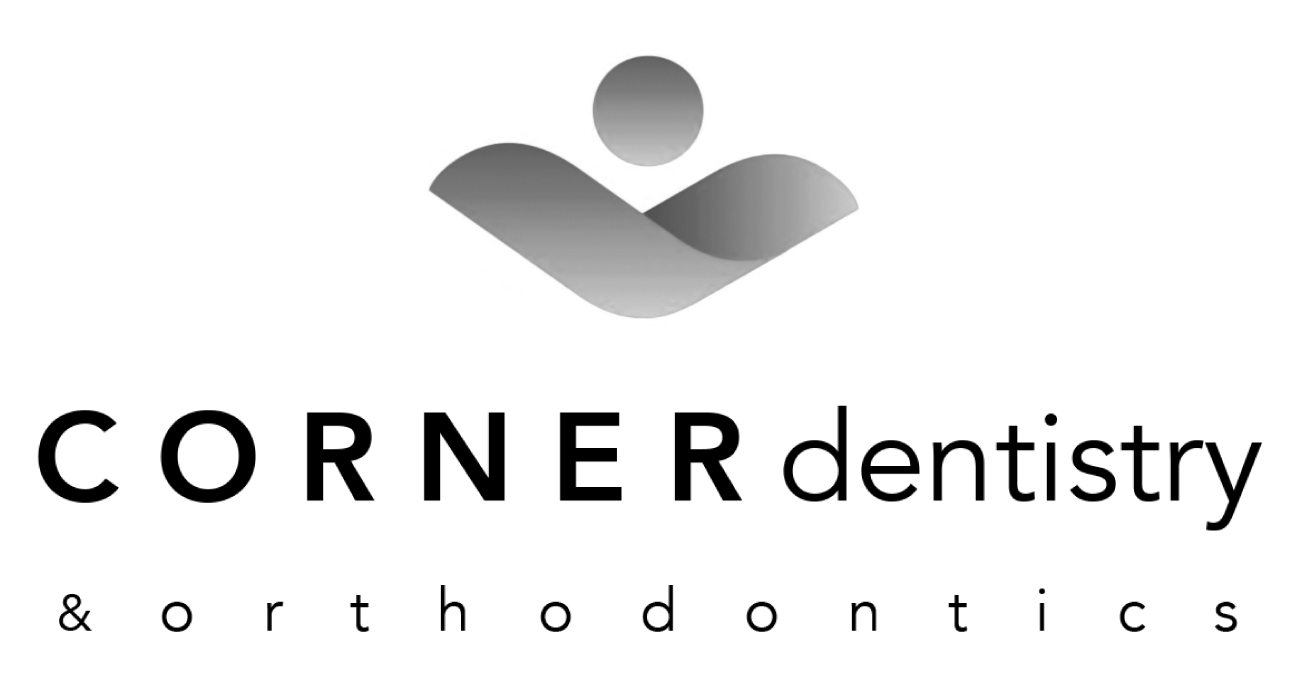Keeping up with your children’s dental hygiene, and even your own, can be a challenging task. That’s why many dentists recommend sealing your teeth as a simple solution for long-term protection against cavity-causing bacteria. In this article, we will discuss dental sealants, their purpose, and other commonly asked questions.
What are Sealants for Teeth?
Dental sealants are a protective coating applied by a dentist to safeguard the teeth that are mainly used for chewing, molars and premolars, from decay. Sealing teeth is a preventative measure that can help individuals who struggle with dental hygiene or want to be proactive about their dental care, whether they are children or adults.
Dental sealants protect the pits and grooves in your teeth where cavities usually start by forming a barrier that keeps out plaque and acids. These grooves, known as fissures, are especially vulnerable to decay because food and bacteria can easily get trapped and are hard to clean with a toothbrush alone.
The dental sealant process is fast, painless, and non-invasive, making it an excellent option for both children and adults who want to take extra precautions in protecting their teeth.
Who Should Seal Their Teeth?
Children are the primary candidates for dental sealants because they often struggle with maintaining their dental hygiene, and their teeth can be protected as soon as they first erupt.
Children aged 6 to 14 are particularly susceptible to cavities in their molars, and sealants can protect them during these cavity-prone years. The age range starts at 6 years old when permanent molars first come in and can be protected before decay starts. Prevention at this stage is always easier than a cure down the road.
Adults can also benefit from sealing their teeth, especially if they are concerned about decay or damage that brushing and flossing alone might not prevent. One factor to keep in mind is that you must not already have decay or fillings present to get the treatment as an adult. If this criterion is met, sealants can offer an added layer of defense against cavities for individuals of any age.
What are Dental Sealants Made Of?
Dental sealants can be made from a variety of materials, but most commonly they are made with resin, which can be either synthetic or made from natural resources. Alternatively, your dentist could recommend a glass ionomer sealant, which is a mixture of water, glass powder, and polymeric acid. Glass ionomer sealant might be recommended because it dries faster and acts as a release system for fluoride. One major drawback is that the ionomer sealant only lasts 3-5 years while the more common resin-based sealant lasts 7-10 years.

How Are Teeth Sealed?
Teeth are sealed during a routine dental treatment at your dentist’s office. Applying dental sealants is a straightforward and painless procedure that usually takes just a few minutes per tooth. Here’s what you can expect:
- Cleaning the tooth: The dentist or hygienist thoroughly cleans the tooth to remove any debris or plaque that is present.
- Preparing the tooth: An acidic solution is applied to the grooves of the chewing surface to prep the tooth. This preparation helps the sealant bond to the uneven parts of the tooth.
- Rinsing and drying: The tooth is rinsed and dried thoroughly to ensure the sealant adheres properly.
- Applying the sealant: The liquid sealant, either resin or ionomer, is painted onto the tooth.
- Curing: A special curing light is used to harden the sealant, forming the durable protective shield.
The entire process is comfortable and doesn’t require drilling, anesthesia, or downtime. You can eat and drink right after your appointment without worry, but it is advised to avoid overly sticky foods in general to help the sealant’s longevity.
Dental Sealant Aftercare
Continuing proper dental hygienic habits after getting your teeth sealed helps maintain them without the need for additional applications. To maintain the sealant and protect your teeth:
- Brush at least twice a day with fluoride toothpaste
Floss daily to remove food particles and plaque from between teeth - Get regular dental checkups and professional cleanings
- Avoid chewing hard and sticky foods like candy that could crack or wear down the sealant
During dental checkups, your dentist will examine the sealants for any signs of wear and can reapply them if needed.
Dental Sealant Treatment Benefits & Risks
When debating whether to get your teeth sealed, it’s important to understand that the procedure is low-risk and the benefits greatly outweigh the potential downsides. Dental sealant treatments are known to prevent 80% of cavities for at least the first two years and last for several years, depending on the type.
Children without dental sealants have almost three times more cavities than those with sealants. Dental sealant treatment is also cost-effective when compared to the price of fillings and other dental procedures caused by tooth decay. Many dental insurance plans cover sealants for children, and if you have to pay out-of-pocket, they won’t break the bank.
There are minimal risks associated with sealing your teeth other than possible allergic reactions to the materials used. Since resin is a thin coating of a plastic-based material, many worry about BPA exposure. Research shows that the amount of BPA released is so nominal that it is not considered hazardous. If this worries you, you can opt for a glass ionomer sealant to avoid any plastic material.
Sealant failure is also a possible concern due to their non-permanent nature. Dental sealants are a temporary solution lasting only 3-10 years, depending on the type chosen and personal maintenance. Sticky, hard, and caustic foods can wear down the sealant over time, leading to the need for reapplication.
Another possible but unlikely risk associated with dental sealants is undetected decay. If there is a hidden presence of bacteria that is not properly examined and cleaned, applying a dental sealant may trap that bacteria, causing damage. Make sure to choose a dentist who will thoroughly examine your teeth before applying sealants to avoid this.

Dental Sealants vs Dental Fillings
It is important to distinguish the differences between dental sealants and standard cavity fillings. Dental sealants act as a preventative barrier to combat tooth decay. In contrast, fillings are a response to a decayed tooth that has already developed a cavity. The decay is drilled away and the tooth is filled with material to restore the chewing surface and to protect the tooth from continued exposure.
When determining your eligibility for dental sealants, you should consider any existing fillings. Teeth with fillings aren’t eligible for sealants because the filling already serves the protective role that a sealant would.
Teeth Sealant Prices
The cost of dental sealants varies based on your dentist, the material used, and how many teeth are sealed. On average, dental sealants cost $30 to $60 per tooth. Most insurance companies will cover the cost 100% or at least a large portion.
Should You Seal Your Teeth?
Dental sealants are one of the easiest and most effective ways to protect teeth from cavities. For children, they offer years of protection during the most cavity-prone stages of life. For adults, they can be a smart preventive option if molars are still healthy and free from decay or previous fillings.
While sealing your teeth isn’t completely necessary, you might thank yourself down the line when you don’t have the financial and medical burden of tooth decay. Contact Corner Dentistry to set up an appointment to discuss if dental sealants are right for your smile.
